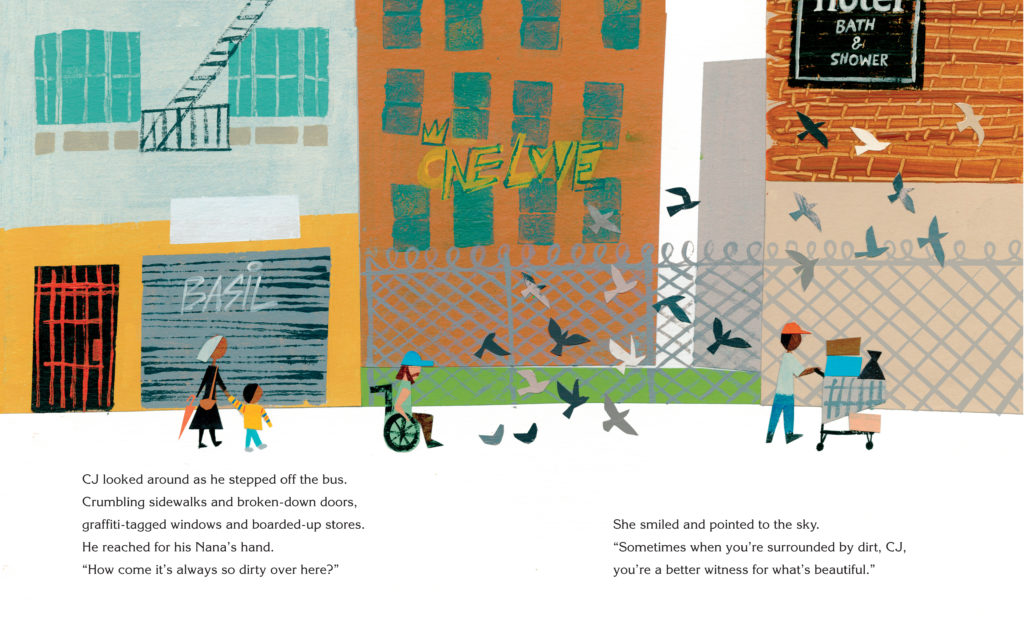

Ask your child for his/her opinion of the book you are sharing – orally or in writing.
#Last stop on market street lesson plan how to
Parents often want to know how to help their children at home, you might want to offer them some of these suggestions during conferences, Open House visitation, or in a monthly newsletter. When children own their own books, they further develop their own reading identity in their family.

Access to books in the home allows children to see themselves as readers in a family of readers. Children who are read to at home come to school with a greater vocabulary and are ready to learn to read in school. As we read together, we build curiosity, memory, and language, especially early on. It strengthens relationships and helps children develop interpersonal skills. This is quality time we spend with our children. Sharing books at home allows parents and children to connect in a very special way. The experience of sharing reading doesn’t have to stop at school. Read alouds are often tagged in numerous places for teaching possibilities – similes and metaphors, rich description, evidence of the author’s voice, unusual sentence structures (adjectives appearing after the noun or an example of a compound/complex sentence), an example of an anecdote, and times to stop and reflect. Lynne tags pages where she will stop to do a think aloud to introduce a strategy or skill such as making a prediction or making an inference.

Keep a list to track read alouds and be sure to include a wide variety of authors and genres as well as ways you might use the book with your students.Keeping a sticky note on the inside cover can remind you of possible ways you can use this book as a mentor text. If read alouds help our students learn how to think, talk, and write about texts, then we should make sure our read-aloud choices are varied.
#Last stop on market street lesson plan series
Visit where Sylvia Vardell and Janet Wong share poetry and books such as the Poetry Friday Anthology Collection series such as The Poetry of Science: The Poetry Friday Anthology for Science for Kids. Visit to glean ideas and find poems shared by Amy Ludwig VanDerwater.

Poems are a great way to read aloud to students to begin a science, math, or social studies lesson, too. Three-minute poems can reap rewards throughout the language arts block and become mentors in both reading and writing workshop. Poems as read alouds can last for a week and be used for word study, vocabulary building, and fluency. Use them in your writer’s notebook to study craft and imitate it before you teach it to your students. Mark sentences and/or passages that can be used to model craft moves in your minilessons. Is the lead something they could emulate? Does the author use interesting vocabulary or descriptions? These noticings could become mentor texts for read alouds in writing workshop and across the day. Read it as a writer and find writing in the text you can highlight later for your young writers. Read it as a reader with sticky notes on hand to note your thoughts and feelings. The read-aloud can push readers into a deeper understanding of the text as children study the work of the author.Ĭhoose a book you love and may use as a read aloud in reading and/or writing workshop. Through the read-aloud comprehension strategies come to life as they are demonstrated by the teacher and used by the students. Shared discussions open up new possibilities. By sharing the text aloud, readers can rely on each other to come to a deeper understanding of the text. Reading aloud gives children an opportunity to access books that may be more difficult to comprehend because of the subject matter and readability. This time brings all readers into the same experience even if their reading levels vary greatly. Read alouds are the time we gather students together to discuss texts we value and often write about them. Teacher to Teacher: Read Alouds Help Our Student Readers & Writers Grow in School & at Home


 0 kommentar(er)
0 kommentar(er)
